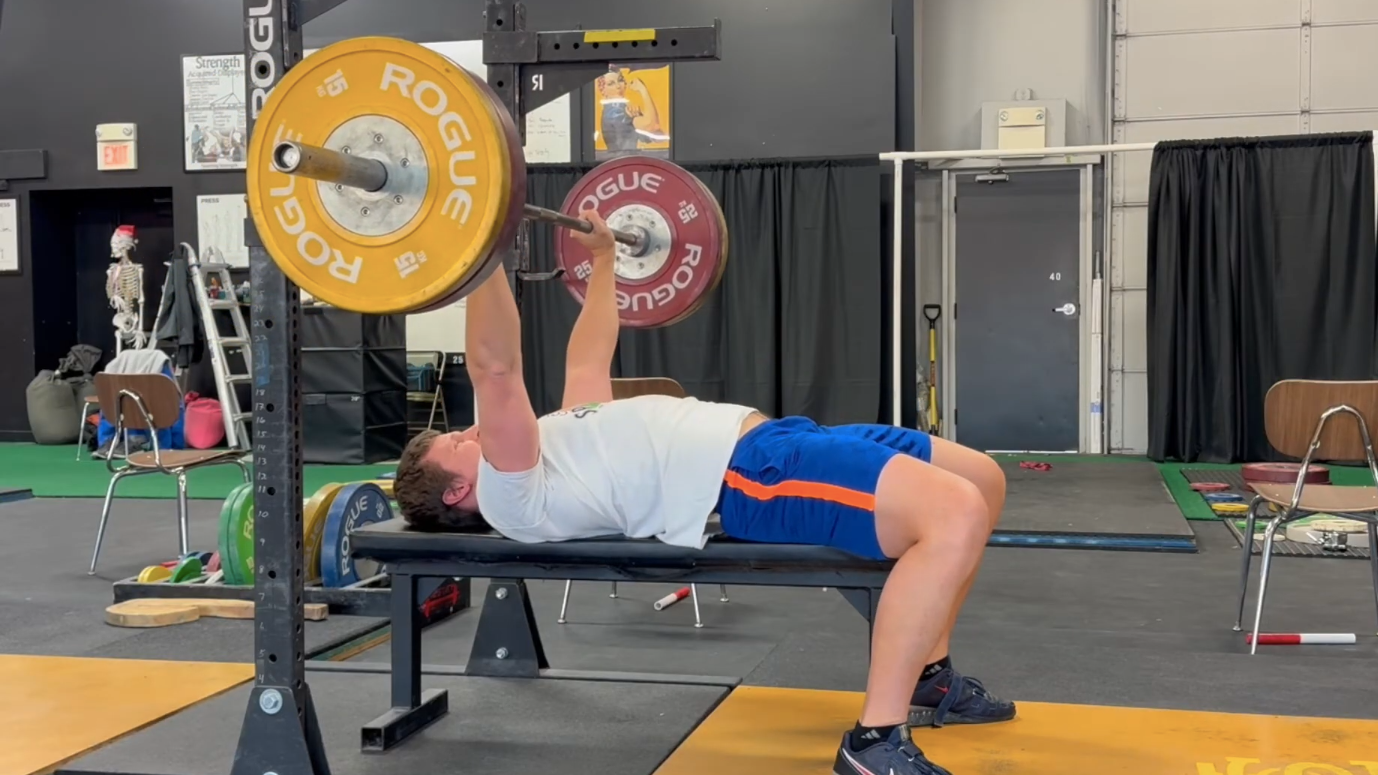TWO Signs You're Accidentally KILLING Your Deadlift... (Starting Strength Coach Explains)
/Within the first five seconds of the video below, I commit two rather hideous mistakes. Watch those first five seconds and see if you can identify the two errors.
Did you notice the mistakes?
The Two Mistakes
The first error I committed was that of not getting tight against the barbell when setting my back and therefore trying to yank the bar off the floor when I started to pull.
In other words, when you squeeze your chest up to set your back in rigid extension, you should be putting a lot of tension (i.e., upward pull) on the bar. I didn’t do that, and this caused me to try to yank or jerk the bar off the floor - a tactic that falls apart quickly as the weight gets heavy.
The second error I committed was that of releasing my breath - releasing my Valsalva maneuver - at the top of the lift. Breath is support, so I should have simply held my breath for the extra half-second that it took me to set the bar down.
Holding your breath at the top of the deadlift isn’t difficult, of course, but the habit of releasing your breath at the top can be a tough one to break, so let’s fix this error as well as the previous one.
The Solutions
The solution to the problem of releasing your breath at the top of your pull comes courtesy of fellow Starting Strength Coach Mia Inman (click here for her excellent article).
The cue is simply: “Lift silently.”
During the actual lift, your mouth shouldn’t make any noise (since you already inhaled before starting the lift). Therefore, remind yourself that your mouth should be silent until the bar is back on the floor.
The solution to the problem of not applying tension to the bar during the setup (and thus yanking the bar at the start of the pull) is opposite that of the previous solution.
The cue is “Get loud.”
When you squeeze your chest up to apply tension to the bar, the bar will get pulled up slightly due to the slop between the shaft of the bar and the collars of the bar as well as due to the slop between the sleeves of the bar and the plates sitting on the bar.
Because of this slightly upward movement, you will hear - if you do this correctly - a click when this happens. We often refer to this movement as “pulling the slack out of the bar” or even “pulling the click out of the bar.”
When you squeeze your chest up, you’ll feel the tension in your arms (it should feel as though your arms are being stretched out), you’ll feel the weight of the bar in your hands, and you’ll hear the bar make noise.
You want that noise.
Yes, you’ll still hear some rattling as the plates shift when you pull the bar off the floor (and the more plates on the bar, the more you’ll hear that), but you should absolutely hear the bar make noise before you pull it off the floor.
Combining Things
To bring it all together, the single cue becomes: “Loud - then silent.”
Get loud - make that bar make noise when you apply tension to it.
But then - be silent. Don’t let your mouth make noise until the bar is back on the floor.
As always, we hope this helps you get stronger and live better.
-Phil
PS: Whenever you want even more Testify in your life, here are some free resources:
Book a free intro and strategy session with us HERE.
Pick up a free copy of Testify’s Squat Guide: 12 Tips to Improve Your Squat Now HERE.
Get our free weekly email - containing useful videos, articles, and training tips - HERE.
Follow Testify on Instagram HERE.
Subscribe to Testify’s YouTube channel HERE.
(Some links may be affiliate links. As an Amazon Associate, Testify earns from qualifying purchases.)




















